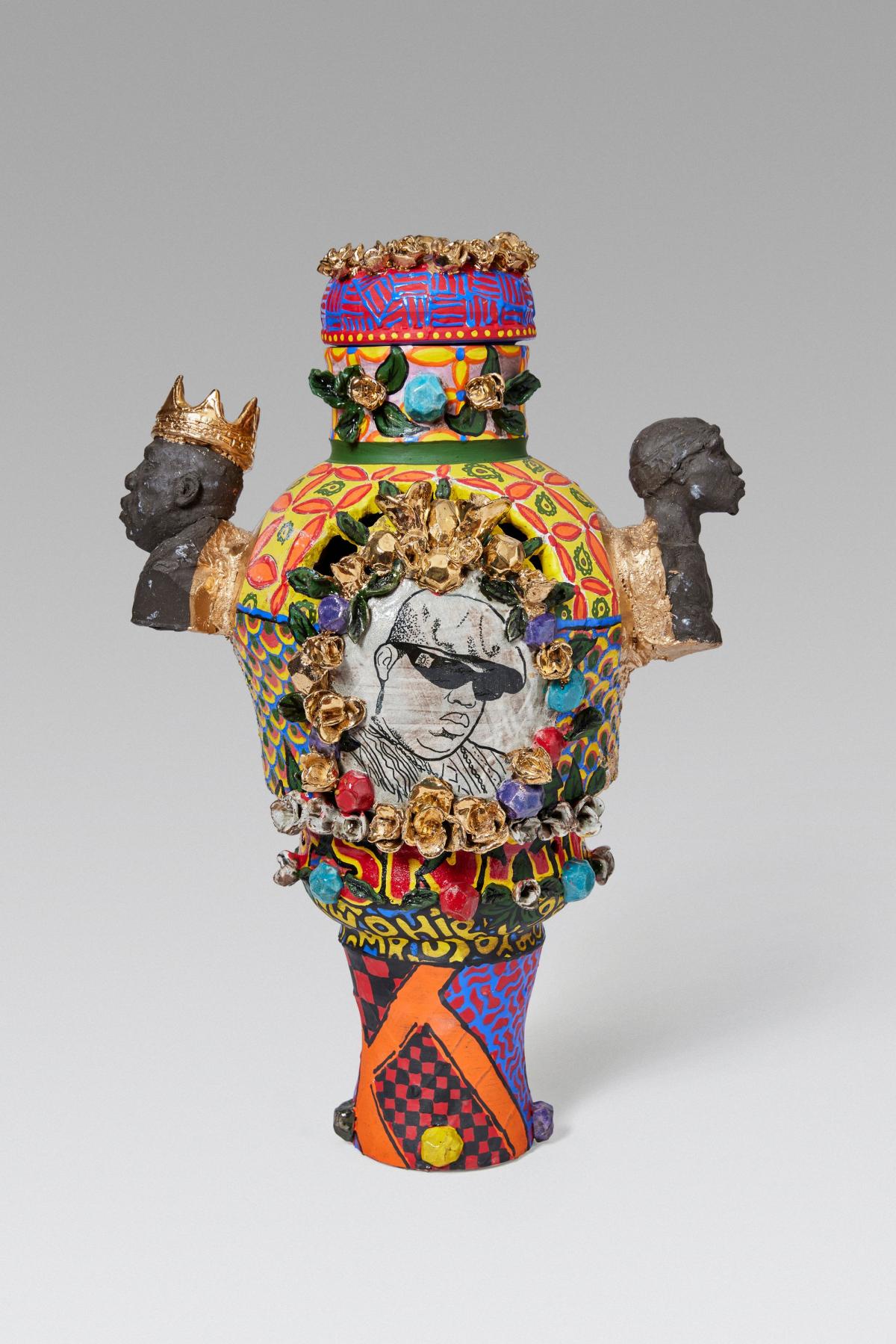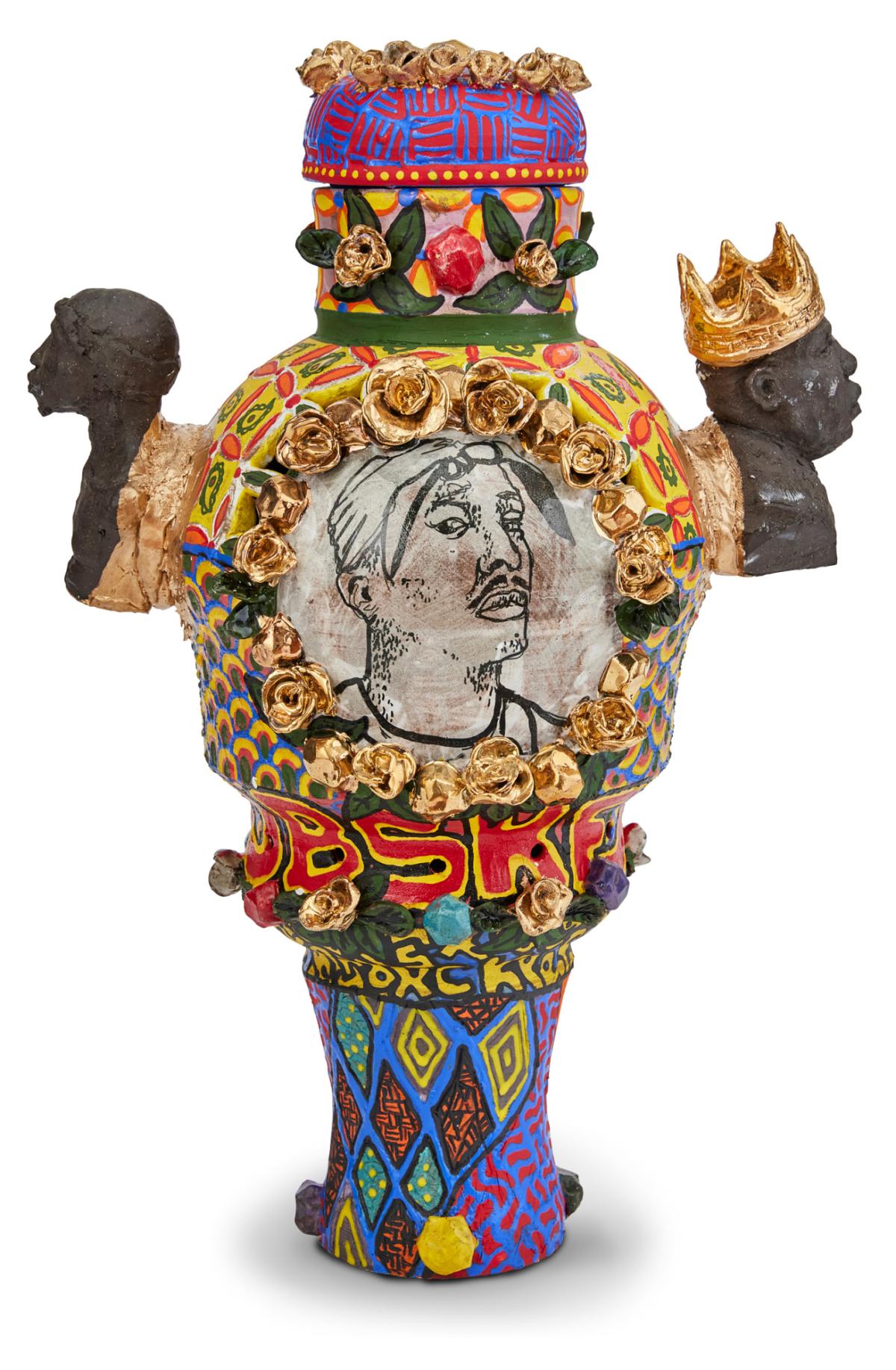Artist Roberto Lugo remixes luxury porcelain objects with hip-hop style. He adorns classical pottery forms with hand-painted portraiture and surface design that incorporate his North Philadelphia roots. Through his works, he reimagines traditional European and Asian ceramics, highlighting themes of poverty, inequality, and racial injustice.
In Juicy, Lugo appropriates the form of the “Century Vase,” a large vessel depicting George Washington created for the U.S. Centennial Exhibition in Philadelphia in 1876. Lugo replaces the framer of American democracy with framers of American hip-hop, the Notorious B.I.G. and Tupac Shakur.
The title, Juicy, comes from Biggie’s first single from his debut album “Ready to Die” in 1994. The song tells the rags-to-riches story about Biggie’s childhood in poverty, his dreams of musical greatness, his time dealing drugs, and how he transformed the music industry. The song resonates with Lugo’s own life story. Born in Kensington, Philadelphia, to working-class Puerto Rican parents, Lugo began his creative career tagging the walls of the city. Then, as the artist often recalls, ceramics saved his life, reorienting his priorities toward art, social justice, and community service.
In Frederick Douglass and Anna Murray Douglass Vase, Lugo celebrates the contributions of the great abolitionist and his wife. While Frederick Douglass’s life story is well known, Anna Murray more quietly supported her husband’s projects, their growing family, and local anti-slavery causes. When the family lived in Rochester, New York, Anna Murray opened the family home to freedom seekers as part of the Underground Railroad.
As in Juicy, the artist surrounds his figures with bold patterns in vibrant colors and urban elements such as graffiti-style bubble letters. Lugo uses his artwork to honor figures who have been traditionally underrepresented and, through the combination of subject and style, explores the intersections of identity, representation, empowerment, and storytelling.
This Present Moment: Crafting a Better World marks the 50th anniversary of SAAM’s Renwick Gallery by celebrating the dynamic landscape of American craft. The exhibition explores how artists—including Black, Latinx, Asian American, LGBTQ+, Indigenous, and women artists—have crafted spaces for daydreaming, stories of persistence, models of resilience, and methods of activism that resonate today. In order to craft a better world, it must first be imagined. This story is part of a series that takes a closer look at selected artists and artworks with material drawn from exhibition texts, the catalogue, and artists' reflections.
Watch artist Roberto Lugo speak at SAAM as part of the Clarice Smith Distinguished Lecture in American Art series.























